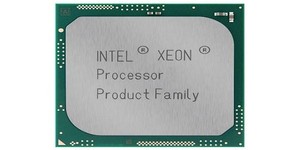TSMC promises 10nm tape-out, outlines 5nm roadmap
January 19, 2016 | 12:46
Companies: #intel #taiwan-semiconductor #tsmc

Taiwan Semiconductor, the fabrication outfit better known as TSMC, has confirmed that it plans to tape out its first products based around a 10nm process within the next few months and has a plan to transition to 7nm by 2018 and 5nm by 2020.
In the world of silicon semiconductors, process node is king. Dropping the size of your components and interconnects is the only way to follow Moore's Law, the observation by Intel co-founder Gordon Moore that the number of transistors on commercial semiconductors roughly doubles every 18 months, without ending up with a CPU the size of a basketball court. Moving to a smaller process node means being able to cram more transistors into the same space, while also bringing about improvements in performance and power efficiency.
There's a limit, however. As you drop below 10nm, the laws of physics begin to get in the way. Drop low enough below 5nm, and electrons start behaving as though the components aren't there - which is ever so slightly awkward when you're trying to build a working chip. Even before these extremes are hit, smaller process nodes bring with them increasingly difficult engineering challenges: Intel, which is typically a node ahead of the competition, ran into real problems in 2013 with its 14nm process node, and recently warned that its 10nm node would be delayed for much the same reason.
TSMC, though, reckons it has cracked 10nm. The company has confirmed that it plans to tape out its first 10nm parts within this quarter. If so, the company would have beaten Intel to the punch, with the American company's own delayed 10nm node not due for mass production until 2017. Meanwhile, Samsung - one of the few semiconductor companies next to Intel which still operates its own fabs - has declared that volume production of its own 10nm process node parts will begin before the end of the year.
TSMC has an aggressive roadmap, too: during its most recent earnings call, co-chief executive Mark Liu explained that his company's roadmap sees it beginning production of 7nm parts in 2018 and 5nm - which will require a switch to extreme ultra-violet lithography (EUV), as the size of the gaps in the lithographic masks becomes too small for other forms of light to pass cleanly through - by 2020.
In the world of silicon semiconductors, process node is king. Dropping the size of your components and interconnects is the only way to follow Moore's Law, the observation by Intel co-founder Gordon Moore that the number of transistors on commercial semiconductors roughly doubles every 18 months, without ending up with a CPU the size of a basketball court. Moving to a smaller process node means being able to cram more transistors into the same space, while also bringing about improvements in performance and power efficiency.
There's a limit, however. As you drop below 10nm, the laws of physics begin to get in the way. Drop low enough below 5nm, and electrons start behaving as though the components aren't there - which is ever so slightly awkward when you're trying to build a working chip. Even before these extremes are hit, smaller process nodes bring with them increasingly difficult engineering challenges: Intel, which is typically a node ahead of the competition, ran into real problems in 2013 with its 14nm process node, and recently warned that its 10nm node would be delayed for much the same reason.
TSMC, though, reckons it has cracked 10nm. The company has confirmed that it plans to tape out its first 10nm parts within this quarter. If so, the company would have beaten Intel to the punch, with the American company's own delayed 10nm node not due for mass production until 2017. Meanwhile, Samsung - one of the few semiconductor companies next to Intel which still operates its own fabs - has declared that volume production of its own 10nm process node parts will begin before the end of the year.
TSMC has an aggressive roadmap, too: during its most recent earnings call, co-chief executive Mark Liu explained that his company's roadmap sees it beginning production of 7nm parts in 2018 and 5nm - which will require a switch to extreme ultra-violet lithography (EUV), as the size of the gaps in the lithographic masks becomes too small for other forms of light to pass cleanly through - by 2020.

MSI MPG Velox 100R Chassis Review
October 14 2021 | 15:04








Want to comment? Please log in.